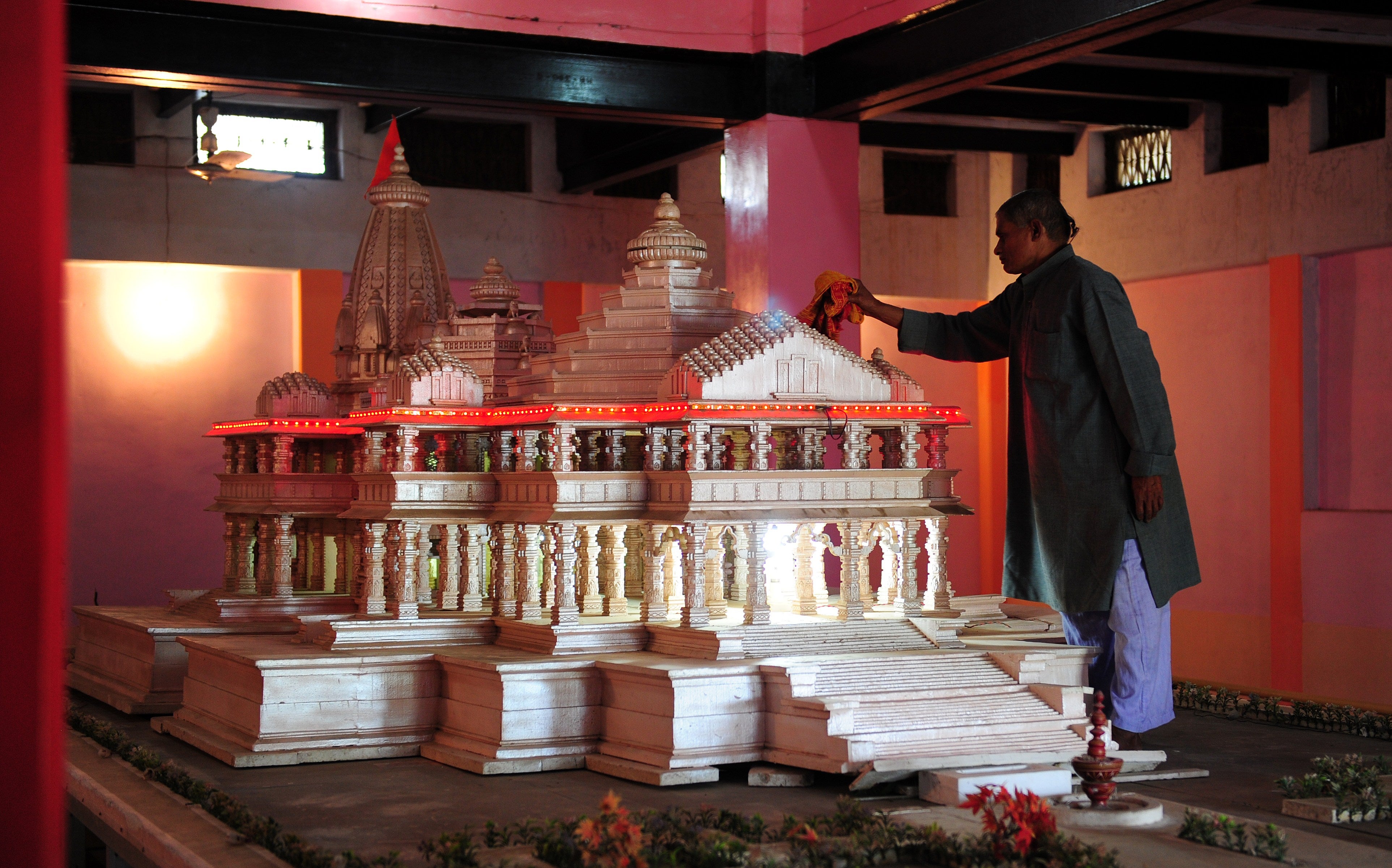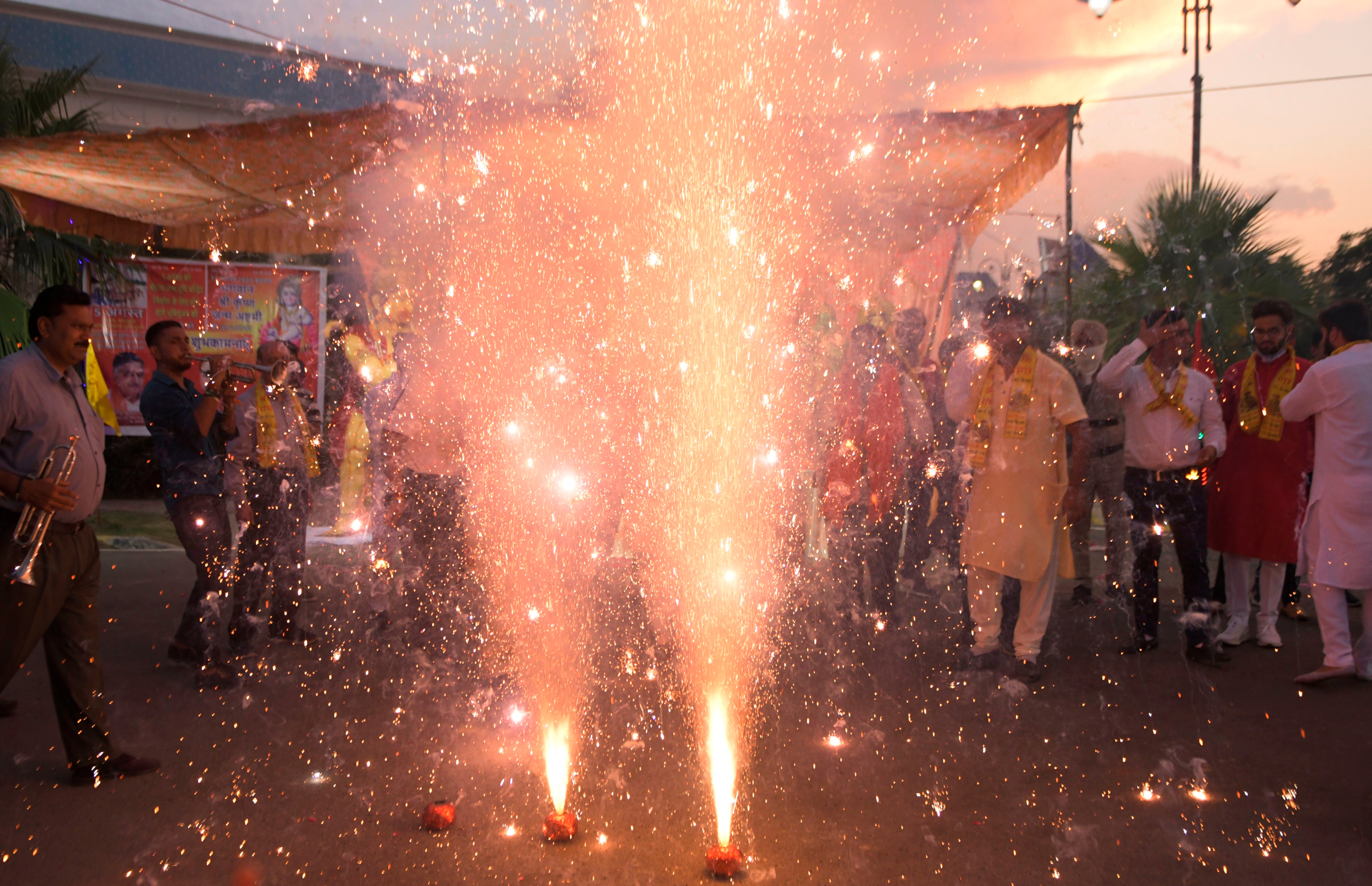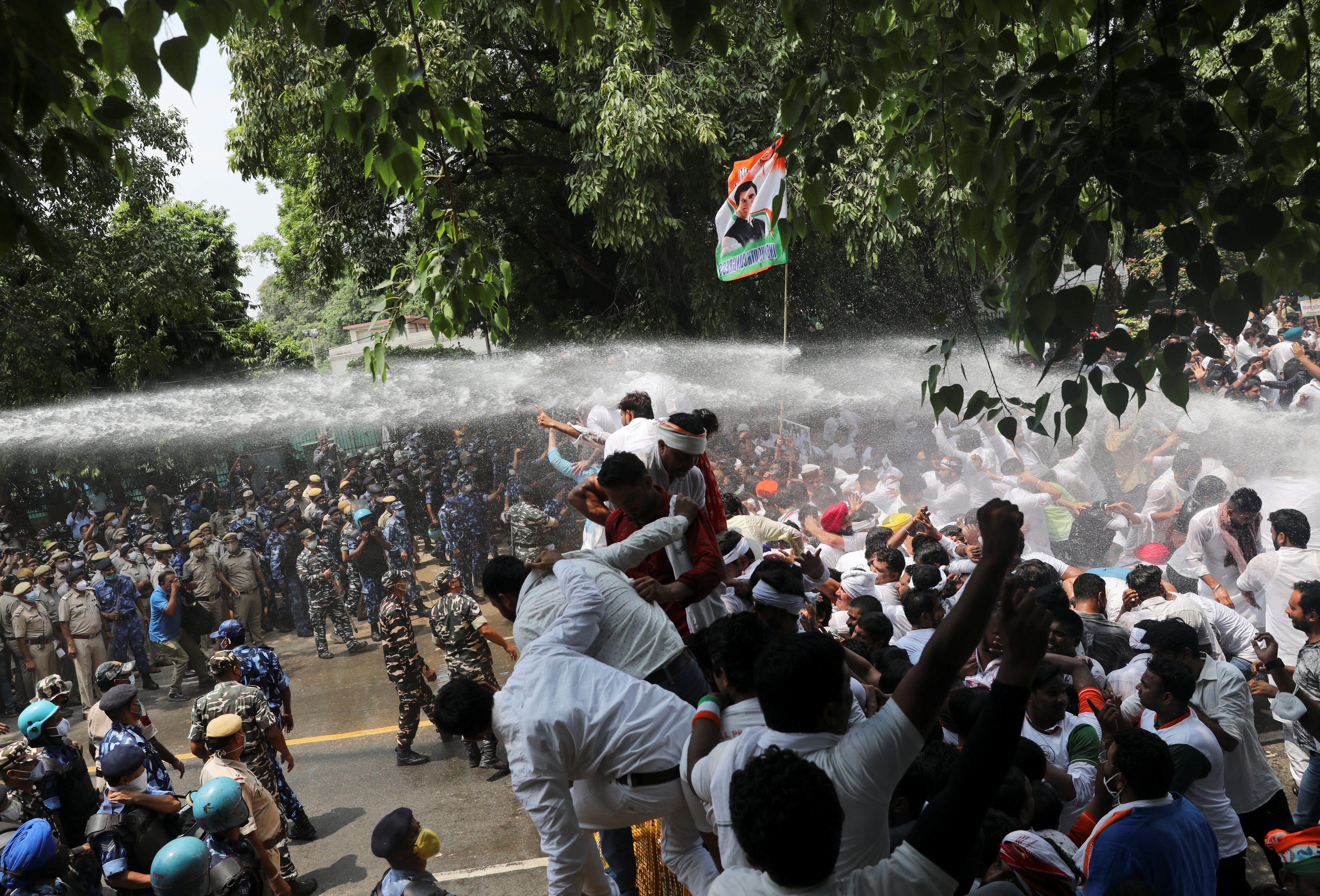Ram Temple: Inside the fundraising craze to build India’s ‘Vatican for Hindus’
Construction has begun on a grand temple at Ayodhya to the Hindu deity Lord Ram, and those seeking donations for the project say the drive has overshot fundraising targets threefold. Mayank Aggarwal meets some of them in Delhi


“Muslims have mosques in Mecca and Medina while Christians have the Vatican. Hindus also need a grand temple for Lord Ram,” says Aniket Kumar.
Kumar (name changed on his request) is one of the nearly 200 people who manage the local activities of the Rashtriya Swayamsevak Sangh (RSS), the ideological parent of India’s ruling right-wing Bharatiya Janata Party (BJP), in the national capital Delhi.
Earlier this year, Kumar and a team of 300 people led a drive for the RSS-affiliated Vishwa Hindu Parishad (VHP) for about 45 days to collect donations ranging from Rs 10 (9p) to Rs 200,000 (£1,936) for the construction of a temple of Lord Ram, a Hindu deity. He says the temple is crucial to the faith of about a billion Hindus in India.
Although party workers refuse to share the exact amount that has been collected for the temple, conservative estimates suggest it’s at least three times the target needed for the construction itself. And while opposition politicians level accusations of corruption in land deals, right-wing activists claim the “craze” to donate is a grass-roots initiative among Hindus from all cross-sections of Indian society.

The construction of the temple started on 5 August 2020 in Ayodhya, in the northern Indian state of Uttar Pradesh (UP), with India’s prime minister Narendra Modi laying the foundation stone.
It followed a favourable court verdict that settled decades of dispute over what to do with the Ayodhya site, where the Babri Masjid mosque stood until it was torn down by a Hindu mob in 1992. In its November 2019 verdict, the Supreme Court of India condemned the way the mosque was destroyed but said the site should be handed over to the government for the construction of a Hindu temple anyway.
The verdict was seen as a major victory for Modi’s Hindu nationalist BJP, which had long made the construction of the Ram Temple one of its key election pledges. Many Hindus consider the site to be the birthplace of Lord Ram and it is claimed a temple stood at the site before the Babri Masjid was built, though the archaeological evidence for this is disputed.
Kumar, a resident of a congested and densely populated area of Old Delhi that has a sizeable population of Muslims, says none in the locality objected to the fundraising drive.
“We are known in our area and respected by all, including people of the local administration. In fact, several Muslim leaders, who are connected to the BJP, also donated to us,” says Kumar.
The Babri Masjid demolition sparked deadly riots in India and led to communal tension for years in its aftermath. Though the court also ordered that a plot of five acres be allotted in Ayodhya to Muslims to build a mosque, the decision was criticised by some.
“The country is now moving towards becoming a Hindu nation,” opposition politician Asaduddin Owaisi said at that time.
Kumar, 35, who has a shop in the area, recounts instances when people, even from less well-off communities, reached out to his team to offer donations.
“There are several unforgettable incidents... We collected donations from markets, from residential colonies, from people on the streets and so on,” he says.
He describes how a rickshaw driver refused to take money for work related to the donation drive and instead contributed Rs 50 (50p) — an amount that would be a big chunk of a day’s earnings. A woman selling baskets gave them Rs 5,000 (£50), and a housewife donated Rs 20,000 (approximately £200).
While some wealthier individuals donated in excess of Rs 100,000 (£1,000), the poor giving whatever they could showed how respect for Lord Ram runs deep, Kumar says. “A guy running a small telephone booth gave his whole day’s earning of Rs 620 (£6).”
Kumar says he led the donation drive in one unit in Delhi, which is divided into about 180 such units, and collected Rs 3.44m (£33,500). “From across Delhi, according to conservative estimates at least Rs 1bn (£9.68m) must have been collected,” he says.
Surender Gupta, state vice-president of the VHP, refuses to share the final numbers from Delhi alone but agreed they had seen a donation frenzy.
“There was this man who donated Rs 51,000 (£500) that was given by his father to him 10 years ago near the time of his death, for the construction of the temple, whenever it starts. Recently, a father reached out to us. His daughter wanted to donate Rs 50,000 (£500) — her first salary. Though our collection drive on the ground has ended, people can still donate online,” Gupta tells The Independent.
‘The craze continues’
The estimated cost of the temple complex, which will also include a museum and a research centre, is around Rs 10bn (£96.8m). So far, local media reports indicate that about Rs 31bn (£300.1m) have been collected by fundraisers — three times the required amount.
Dr Anil Mishra, a member of the Ram Janmbhoomi Teerth Kshetra Trust, which was formed by the government and is leading the construction, says the sanctum sanctorum will be open to the public from December 2023, less than six months before the scheduled 2024 parliamentary elections in India.
And even now it is on its way to becoming a reality, the temple remains at the heart of political campaigning to woo Hindu votes. Last month, the Bahujan Samaj Party (BSP) party led by Mayawati, a leader of the Dalit (formerly untouchable) community, promised to expedite the construction of the temple if voted to power, a move aimed at wooing upper-caste Brahmin voters.
Though Brahmins are less than 15 per cent of the population of UP state, they wield an outsize influence. The BSP chief is trying to stitch an alliance of Brahmins and Dalits, who constitute about 23 per cent of the population in the state, to return to power.
“The work of the temple is going on in full swing and about 60-65 per cent of the work for the foundation of the temple has been completed. Once the work for the foundation is done, the other parts will start,” Mishra says.

Mishra says the Rs 31bn collected so far has come from about 1.1 million families, including people from over 400 villages.
“The audit of donations from some other areas is going on and it may result in another one or two billion rupees (approximately £10-20m),” he says, but declines to give details about the amount of money spent so far on the work.
On 5 February 2020, Modi announced the formation of the trust in the Indian parliament, and on the same day the ministry of home affairs donated a symbolic Rs 1 in cash (about 1p) for the trust to begin the construction work.
In February 2021, the Uttar Pradesh government – which is also led by Modi’s BJP – presented its annual budget, in which it announced a provision of Rs 3bn (£29.1m) for the construction of the Ram Temple and the access road to Ayodhya Dham. The UP government also announced Rs 1bn (£9.7m) for the development of tourism facilities in Ayodhya.
But otherwise, the money for the temple and its associated complex has largely come through public donations.
“In the past few months, some members of trust have said that extra money collected through donations will either be used for making the temple complex grander or for renovating all other temples in the city,” says a member of the trust, speaking on the condition of anonymity.
“The final and official decision, however, is yet to be taken. The members of the trust will decide about this in future but right now all the focus is on ensuring that a grand temple is built and it is done properly,” he tells The Independent.
With so much money changing hands, the temple fundraising has not been without its own controversies. As well as reports of unofficial donation drives of questionable provenance, opposition party leaders have alleged corruption in deals to acquire land associated with the construction. In June, India Today reported about deals in which two plots of land worth Rs 4.7m were allegedly sold to the trust at a hugely inflated price, around Rs 35m.
Pawan Pandey, the Ayodhya-based spokesperson of the opposition Samajwadi Party, claims he is the first person to have raised the issue of corruption in land deals.
“A beautiful and grand temple should be constructed. In Ayodhya, no one is against it no matter what their religion is. However, the way land deals are being made where land is sold for 10 times its original worth has brought disrepute to Ayodhya. It is a joke with the faith of Hindus across the country,” Pandey says.
“The way the land deals were made is akin to playing with the emotions of the [people in the] country who are followers of Lord Ram… it is corruption. We are the real disciples of Lord Ram as we have ensured, from the time we raised the issue, that no land can now be sold in Ayodhya for the temple without a proper verification process. The trust has lost the trust of the people,” he says.

Ajay Kumar Lallu, who heads the UP branch of the national opposition party Congress, says people of the state “can no more be fooled in the name of religion”, accusing the ruling party of using the temple to divert attention from matters like farmers’ protests, unemployment and the Covid-19 pandemic.
“The whole health infrastructure has collapsed in the state but the government is running away from discussing that and trying to distract people,” Lallu says.
Mishra refused to comment about alleged corruption in land deals connected to the temple. He asked The Independent to contact Champat Rai, general secretary of the Ram Janmbhoomi Teerth Kshetra Trust. Repeated calls to Rai went unanswered.
The issue of the Ram Temple has rocked Indian politics and has been a top electoral gambit for the BJP for over four decades. Now in power, both in UP and nationally, Modi’s party is hoping that the temple’s successful completion will appease its core voters and help it stay in office, riding what it describes as a wave of resurgent Hindu pride.






Join our commenting forum
Join thought-provoking conversations, follow other Independent readers and see their replies
Comments